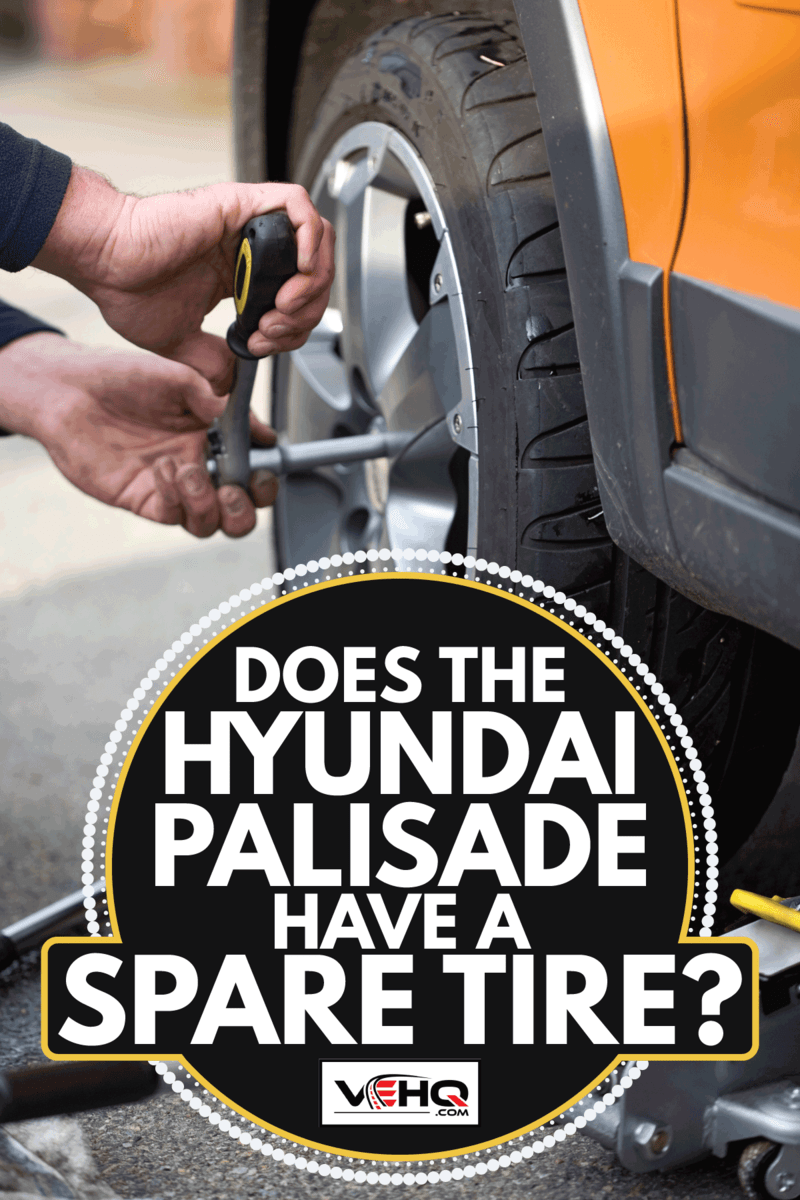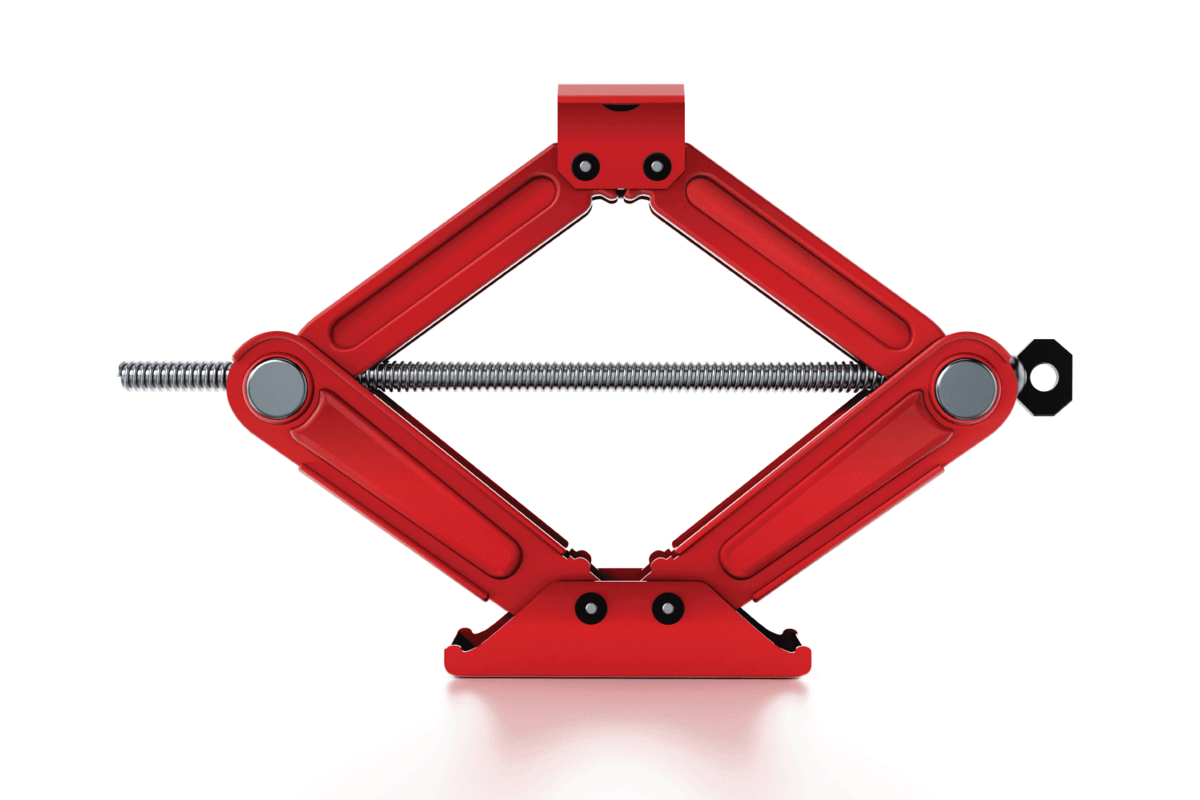Before you take your vehicle on the road, it's always a good idea to do some safety checks. No matter what your own personal inspection routine entails, it should always include making certain that you have a reliable spare tire. Imagine being miles from anywhere, getting a flat, and then discovering that you have been driving without one. If you're driving a Hyundai Palisade, you might be wondering if it has been equipped with a spare tire. We researched this popular SUV from multiple professional sources, so you can have a definitive answer.
Like most vehicles, the Hyundai Palisade does come with a spare tire. This spare tire is not a full-sized one. Rather, it is what is commonly referred to as a donut. Driving on a donut tire should be done with extra care and only for a limited number of miles.
Now that we know the Hyundai Palisade has a spare tire, we'll look more in-depth about the tire itself. You might also have other questions about your Palisade. How do you change the tire? How far can you drive on the spare? Where is the spare located? For the answers to these questions and more, read ahead in this post to see what we've discovered.

What's Mounted Underneath
The standard spare tire that your Palisade is equipped with is a compacted tire, or donut. The size of this spare is substantially smaller than the full-sized tire that it would be replacing. For 2021, the donut size is T155/90 R18.
This donut has some significant restrictions to it that should be followed. Before you ever put a spare on any vehicle, it's critical that you consult your owner's manual. Here, you'll find the exact restrictions for your donut, as well as other important safety guidelines that need to be followed.
Where Is The Spare Tire Located On A Hyundai Palisade?
The spare tire for the Hyundai Palisade is located underneath the SUV in the rear. There is a release button for this spare in the storage compartment in the back of the Palisade. You'll also find a tire changing kit in this compartment, complete with a small car jack and lug nut wrench.

How Do You Change The Tire On A Hyundai Palisade?
Stuck with a flat and without any clue on how to change it? Here's our step-by-step guide to getting your Palisade back on the road. Use this in conjunction with your owner's manual for the best and safest results.
Locate the spare
Your spare tire is located in the rear of your Palisade, underneath the frame. In the storage compartment behind the back row of seating, you'll find a release button. Engage it, and you can remove the tire.
Gather the necessary tools
You'll need a car jack and a lug nut remover. The latter looks a bit like a crowbar but will be smaller if it's the same one that your Palisade comes equipped with. Both the jack and the lug nut remover will be located in the same compartment as the spare tire release button.

Set the jack in place
Make sure you are parked in the most level spot you can safely get to. Carefully set the jack underneath the Palisade so that the flat top of the jack will come into level contact with the subframe of the vehicle. Using the rod that accompanies the jack, turn the jack screw clockwise, stopping when the top of the jack begins to press firmly against the subframe of the Palisade.
Chock the wheels
If you're able to chock your wheels, do so now. This will prevent your Palisade from moving on you.
Loosen the lug nuts
With the jack firmly in place and the wheels chocked, you're now ready to loosen the lug nuts. Using the lug nut remover, carefully turn them counterclockwise. You'll need to use some muscle here, as these lug nuts can be really tight when they're hot from driving. Loosen them with the lug nut remover until they are loose enough to be removed by hand.
Jack up the car
Raise the car with the jack. Do so slowly and carefully until the tire is several inches from the ground.
Remove the damaged tire
Remove the lug nuts by hand. Be careful not to misplace them! Then, you'll be able to remove the damaged tire. Once it is off and set to the side, you'll be ready to place your spare tire onto the wheel. When you've got your spare mounted, hand tighten each of the lug nuts.
Once they are hand tightened, give each one a half a turn with the lug nut remover. Slowly tighten each one, a half turn at a time. Tightening one all the way, then moving to the next one and doing the same, isn't advisable. This can create a bit of an imbalance, so it's best to just tighten each one bit by bit.
Lower the jack
When your lug nuts are firmly tightened, slowly lower the jack.
Inspect
Using the lug nut remover, give the lug nuts a few final turns to make certain that they are snuggly in place. Be sure to gather all of your tools and your spare before you drive off to get a replacement tire.
Is It Illegal To Drive Without A Spare Tire?
No states currently have laws that require you to carry a spare tire in your vehicle. But just because it's not a law doesn't mean that you shouldn't carry one with you at all times. In fact, driving without a spare tire can create a lot of safety issues, as well as cost you valuable time while you wait for someone to pick you up.
At the very least, you should have a donut in or on your vehicle at all times. This will allow you to do a quick tire change and get to someplace that can sell you a full-sized replacement for the damaged tire.
It's recommended, however, that you carry a full-sized spare tire with you when you travel. This is especially important if you plan to take a long road trip, live in a remote area, or have a longer-than-average commute. A full-sized spare means that you won't have the speed and distance restrictions that come with the donut. We'll talk more about that ahead in this post.
How Far Can Spare Tires Go?
The distance that you can cover with a spare tire will vary from manufacturer to manufacturer. It will also depend on whether or not you have a compact spare donut or a full-sized spare tire. If the spare is full-sized, then you're only limited to the number of miles that the manufacturer sets. This information would be given to you whenever you purchased the tire from the tire dealer.
Keep in mind that you should have a mechanic inspect the tire opposite the one you are replacing with the spare. If there is a significant difference in the tread level between the two, it can cause your SUV to go out of alignment. And if you have an all-wheel drive Palisade, this can create some moderate mechanical issues over time.
But what about driving on a donut? Can you treat it as a normal, full-sized tire?
Most donuts have a limit of about 50 miles. They should also not be driven on at speeds that exceed 50 miles per hour. As this tire is more compact than the others on your Palisade, it won't be as stable. The tread won't be as heavy, either. In addition, because this tire is a bit smaller, driving at high rates of speed will make your vehicle more difficult to control.
It's strongly recommended that you not drive on any donut, other than to make the trip to get a full-sized replacement tire. While this might be inconvenient, it's a matter of safety for both you and those you share the road with.
In Closing
Spare tires are essential items to have onboard your vehicle, no matter how far you'll be driving. Most model vehicles will come with one, although these tend to be the more compact tires that can only be driven a limited amount of miles. Familiarize yourself with how to change the tires, as well as how to safely drive on a spare. Doing so will save you and your passengers a lot of time and will make you much safer on the roadways.
If you enjoyed reading this post on the Hyundai Palisade, we believe you'll find the following automotive posts to be helpful:
What Are The Best Kayak Racks For Pickup Trucks? [6 Options Explored!]
Can a Chevy Silverado Be Flat Towed? Here’s What Truck Owners Need to Know
How Much Does RV Camping Cost? [A detailed Analysis with Examples]
